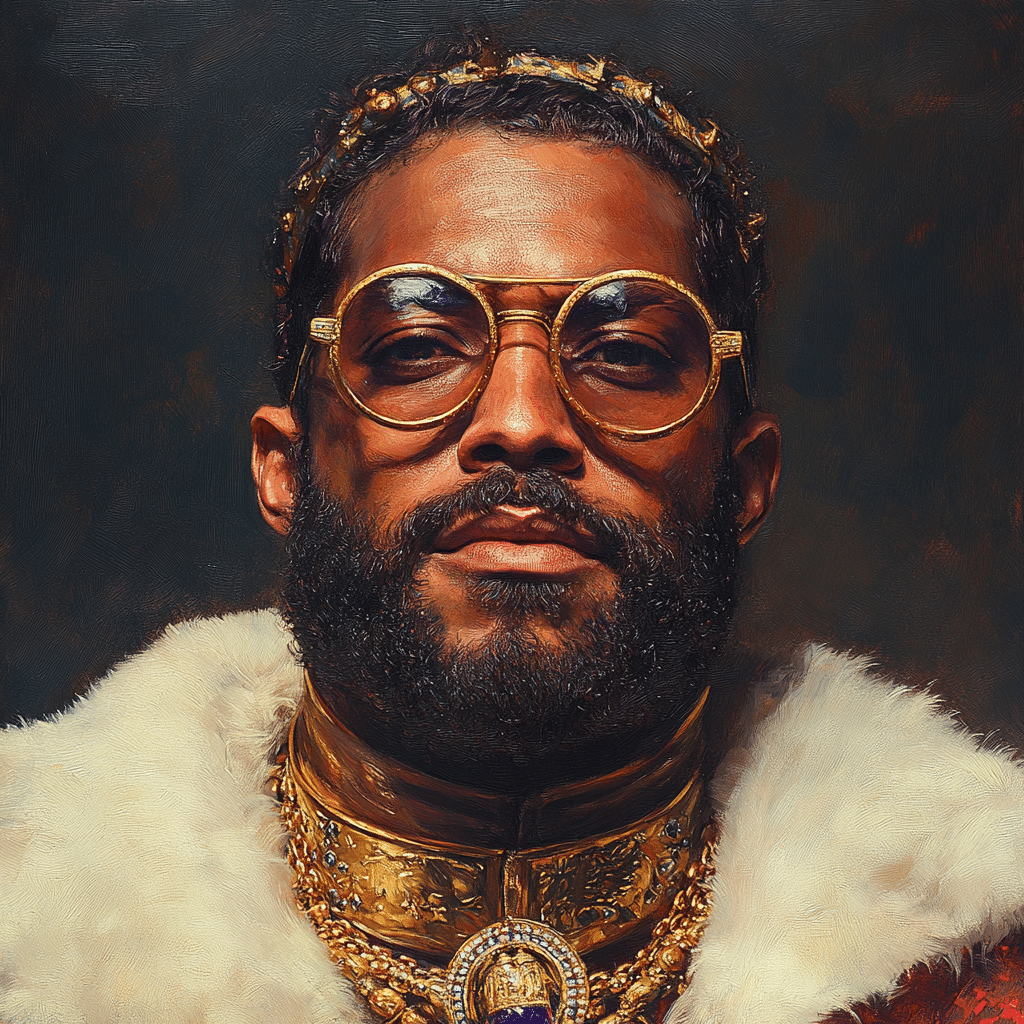King James 1, or James Charles Stuart as he was originally named, is a figure whose royal journey is marked by ambition, political maneuvering, and a profound influence on culture and religion that resonates even today. Born in 1567 amidst chaos, James ascended to the Scottish throne at just a year old after the abdication of his mother, Mary, Queen of Scots. This early elevation set him on a remarkable path that would eventually see him become King of both Scotland and England, a title that significantly shaped British history. As we reflect on King James 1’s legacy, we uncover vital lessons that emerge from his story—lessons that echo our need for strong leadership in today’s perplexing political climate.
The Early Life of King James 1: From Scotland to the English Throne
King James 1’s early years were anything but ordinary. Growing up in a time of political turbulence, he faced relentless power struggles among Scottish nobles who sought to control him. His education was overseen by key figures, including Protestant reformer George Buchanan, instilling in him a strong belief in the monarchy’s divine right to rule. This upbringing prepared him for the monumental task ahead as he sought to unite England and Scotland, a precedent that holds relevance in today’s increasingly polarized society.
Despite his royal status, young James’s life was filled with uncertainty and danger. He lived under constant threat due to political machinations that often came from those who should have been his protectors. Yet, he emerged from these trials with a nuanced understanding of power dynamics, one that would guide his reign as he mastered the delicate balance between governing and appeasing competing interests.
At the age of 37, after the death of Queen Elizabeth I in 1603, James made a pivotal move by claiming the English throne. His ascension not only marked a historical moment as the first monarch to rule both England and Scotland but also ignited hopes for a more integrated British identity. His early challenges shaped a vision for a united kingdom, and he began to craft policies that would influence the course of British governance.

5 Key Events in King James 1’s Quest for the English Crown
The Modern Relevance of King James 1’s Reign: Lessons in Leadership
Today, King James 1’s legacy shed light on vital lessons in leadership, showcasing how the merging of cultures and the navigation of political strife can lead to a more cohesive society. His experiences illustrate the importance of inclusivity in leadership, as he learned early that true authority blends respect for tradition with the willingness to engage and negotiate with diverse factions.
James’s era also teaches the significance of effective communication. By commissioning the King James Bible, he recognized that accessible language could wield enormous influence, a lesson we can apply in our modern political discourse. Successful leaders understand the value of a unifying message that resonates with their constituents.
Furthermore, King James’s tactful handling of delicate situations is a reminder that compromises are essential to governance. Lessons from his reign encourage us to reflect on the balance between authority and public sentiment—an ongoing challenge for contemporary leaders.

Innovative Perspectives: The Legacy of King James 1 on Today’s Leadership
As we navigate our current political landscapes, King James 1’s methodology serves as an inspiration. The unification of the crowns of England and Scotland parallels efforts today to bridge divisions across various sectors. Leaders facing divisive issues can refer to James’s approach—not by force but through engagement, understanding, and effective communication.
Moreover, James’s foresight in cultural initiatives like the King James Bible emphasizes the enduring power of language as a tool for influence and consolidation. It invites modern leaders to harness the potential of accessible narratives that resonate deeply with the populace.
In essence, the extraordinary journey of King James 1 transcends mere historical interest; it provides essential insights for contemporary leadership today. His efforts to unify a divided realm amidst religious and political strife highlight ongoing challenges in governance and social cohesion. As we reflect on his legacy, we invite modern leaders to learn from his strategies, aiming to strike a balance of power, faith, and cooperation.
In conclusion, King James 1’s journey to the throne remains a compelling reminder of the trials and triumphs inherent in leadership. As we face our challenges, may his story inspire us to pursue unity, understanding, and effective governance that echoes through the ages.
King James 1: A Royal Journey Worth Noting
A Monarch with a Past
King James 1 wasn’t just any ruler; he had an incredibly diverse life before claiming the English throne. Born in Scotland in 1567, he ascended as king when he was merely a baby! Talk about starting off young! His early days would shape him into the intriguing monarch that history remembers. Did you know that his journey eventually linked Scotland and England, forming what we now know as Great Britain? If only there were a trivia game online that could summarize this grand lineage. If you’re looking for some lighthearted entertainment, you might enjoy the comedic insights of Derek Waters, whose sketches often touch on royal themes.
A Political Player
Another captivating aspect of King James 1’s reign was his keen political mind. He was known to juggle various factions, working with them to strengthen his power. His ability to dance with political challenges reminded many of today’s sports seasons, with fans wondering who won The Chiefs game today! Just like a coach setting up the perfect play, James navigated the tricky terrain of court politics, ensuring he kept the crown securely on his head.
Beyond Politics: A Literary Legacy
But King James 1 didn’t just focus on rule; he made a significant cultural impact as well. He commissioned the famous King James Bible in 1611, a translation that would resonate through the ages. His commitment to the arts was clear, akin to how new filmmakers like Marlon Wayans contribute fresh ideas to cinema. And just like the ever-evolving landscape of finance, where folks consider whether to invest or pay off their mortgage, James was all about leaving a lasting legacy that would stand the test of time.
Through his political acumen and cultural contributions, King James 1 remains a fascinating figure. From his high-flying start in Scotland to his impactful reign, he’s a reminder of how a single life can influence nations. So next time you’re near a history book or a royal-themed trivia night, take a moment to reflect on this remarkable king and his storied path!

What happened to King James 1?
King James I passed away in 1625 due to natural causes, comfortably in his own bed, unlike many of his family members who met more violent ends.
Did King James 1 believe in God?
James professed a strong belief in God, having been raised by Presbyterians and supporting Puritanism while on the Scottish throne, while also hoping for a more tolerant approach towards English Catholics due to his mother’s Catholic roots.
Was King James 1 related to Queen Elizabeth 1?
He was indeed related to Queen Elizabeth I, being her nearest royal relative, as both were descendants of Henry VII, the first Tudor king.
What happened to King James 1 when he was a child?
As a child, James faced a tumultuous upbringing, seeing his mother for the last time before he turned one and being crowned King of Scots at just thirteen months old, all while growing up amidst political struggles among rival nobles.
What did King James 1 do to the Bible?
King James I commissioned a new translation of the Bible, which became known as the King James Version, completed in 1611, aimed at unifying various translations for English-speaking Christians.
Why was King James exiled?
James was not formally exiled; however, he lived a part of his early life under the threat of political turmoil and abduction due to the conflicts surrounding his mother’s reign.
What Bible did Christians use before the King James?
Before the King James Version, English Christians primarily used the Bishops’ Bible or the Geneva Bible, which was popular among Puritans and dissenters.
What is God saying in James 1?
In the book of James, God speaks about enduring trials, faith, wisdom, and the importance of good deeds, emphasizing a practical faith in everyday life.
Why Protestant vs Catholic?
The divide between Protestantism and Catholicism stems from issues like the authority of the Pope, the nature of salvation, and various church practices, sparking significant religious conflict across Europe.
Why did Elizabeth become queen and not Mary?
Elizabeth became queen instead of Mary due to the latter’s contested claim and the political landscape, where Protestant support solidified Elizabeth’s position during her ascension after her half-sister’s death.
Who is the king of Scotland now?
Currently, Scotland does not have a king, as the monarchy is unified under the British crown, with Charles III being the reigning monarch.
Did Elizabeth and James ever meet?
There’s no historical evidence that Elizabeth and James ever met, even though they were closely related and ruled at the same time.
How many illegitimate children did James have?
James I is reported to have had several illegitimate children, with estimates often citing around five, although exact numbers can vary and are sometimes debated.
What happened to King James 1 wife?
James I’s wife, Anne of Denmark, outlived him, continuing her life in England after his death, and became known for her political influence and patronage of the arts.
What did Queen Elizabeth look like?
Queen Elizabeth I was often depicted with striking red hair, pale skin, and a regal attire, reflecting the fashion of the time, which emphasized her status and authority.





































